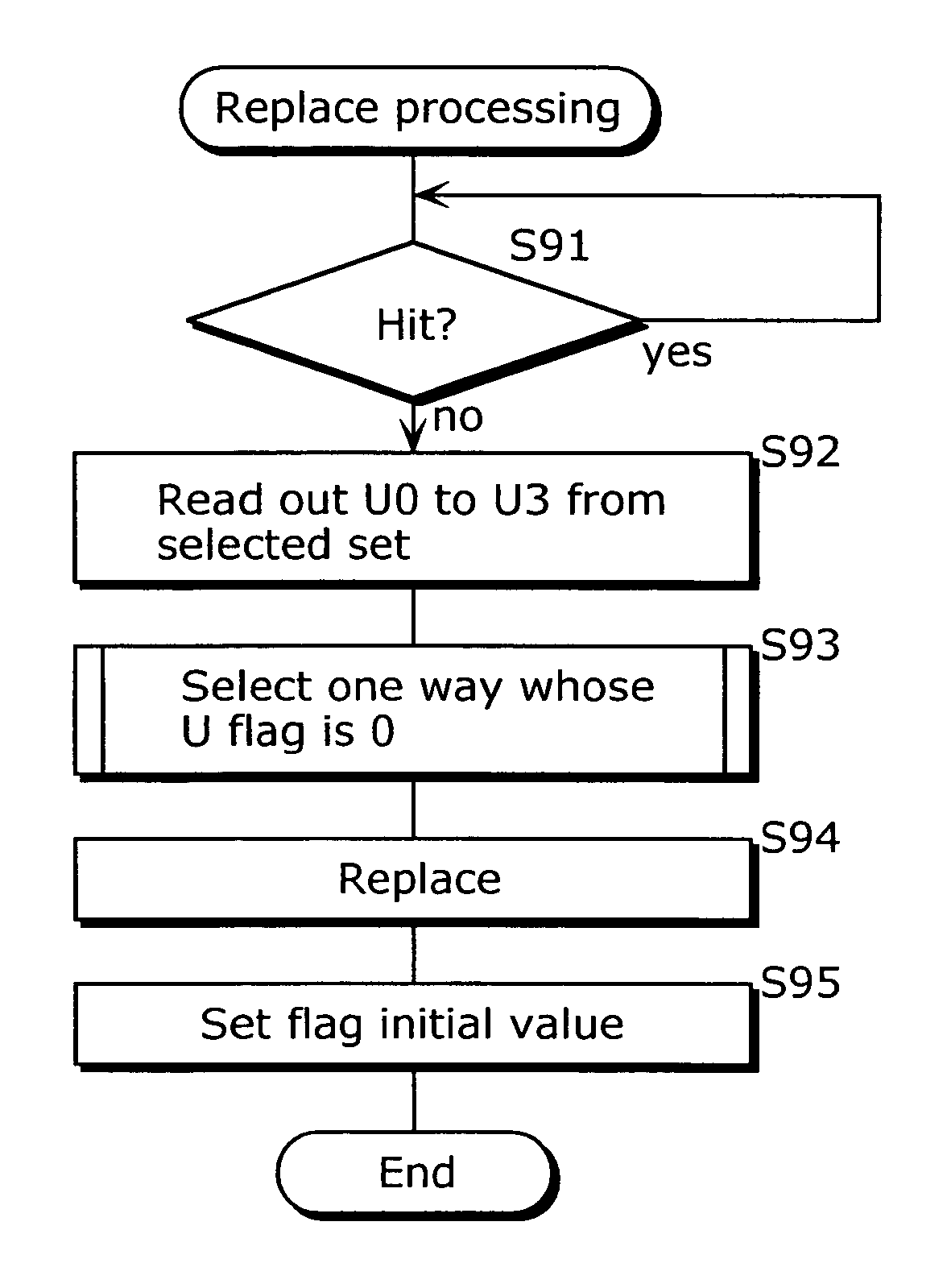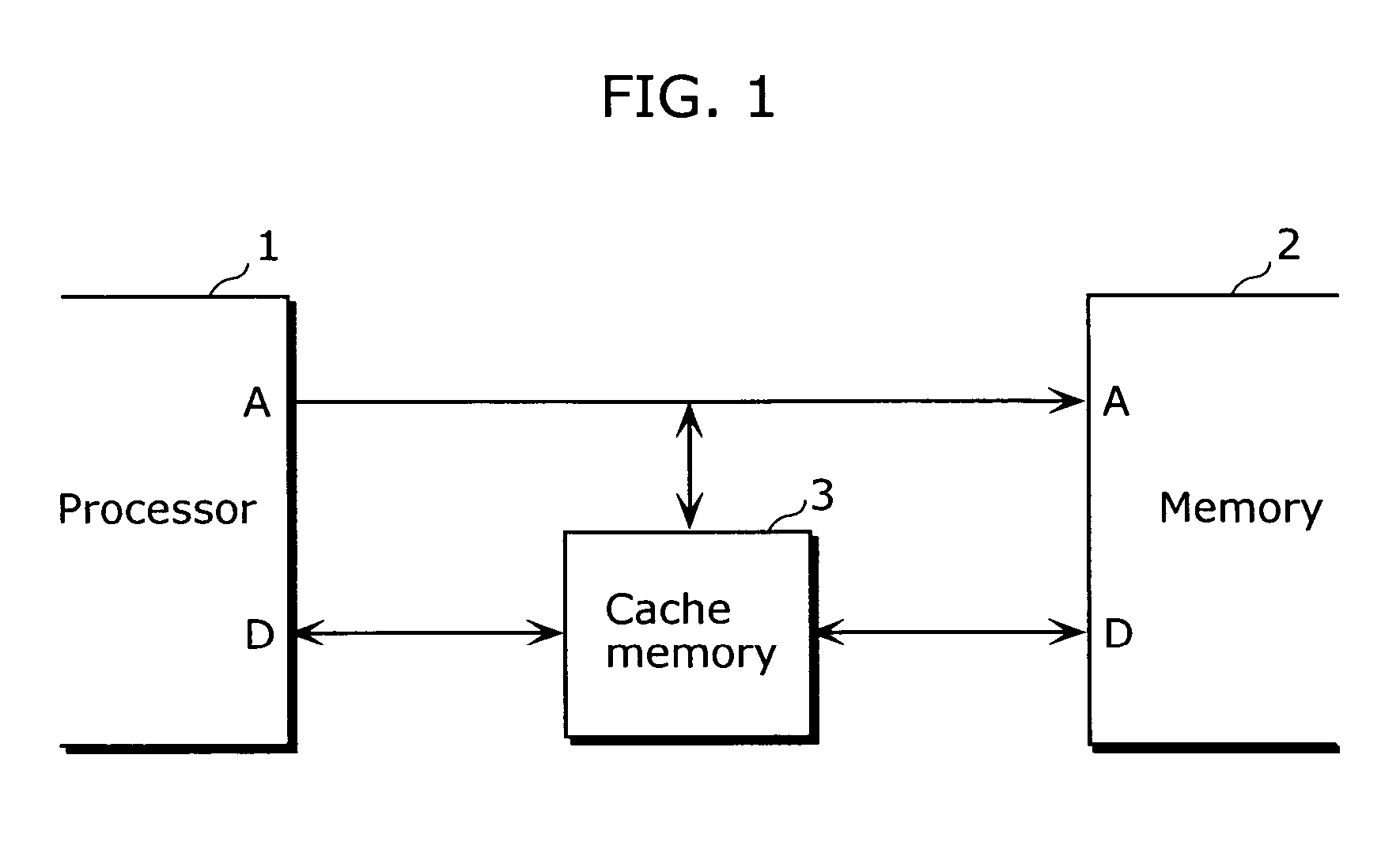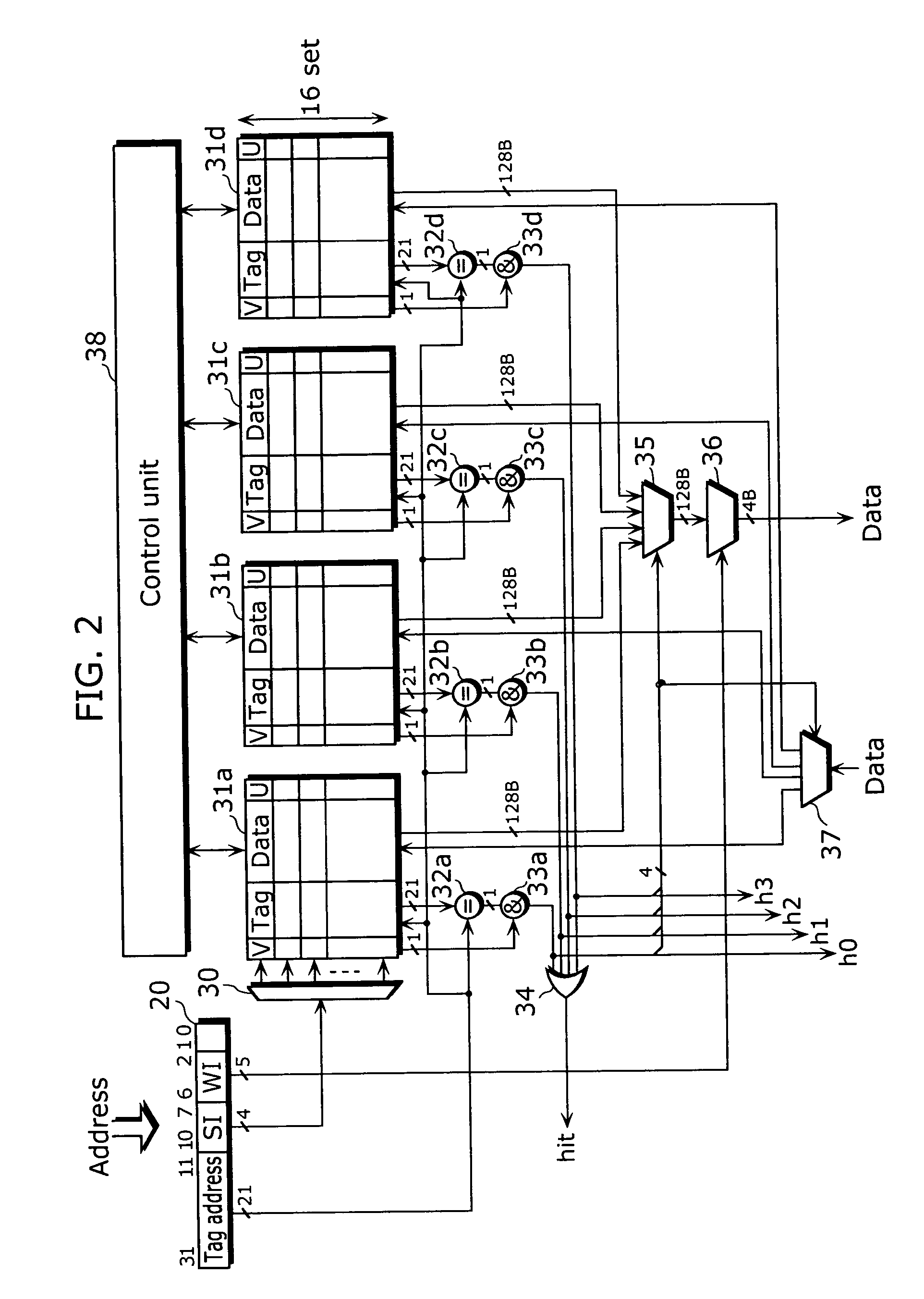Cache memory and cache memory control method
a control method and memory technology, applied in the field of cache memory, can solve the problems of large size of storing units, large size of circuits for updating access order data, and large hardware size of hardware, so as to reduce the size of hardware
- Summary
- Abstract
- Description
- Claims
- Application Information
AI Technical Summary
Benefits of technology
Problems solved by technology
Method used
Image
Examples
first embodiment
[0038]
[0039]FIG. 1 is a block diagram showing a rough outline of a structure of a system including a processor 1, a cache memory 3 and a memory 2 according to the first embodiment of the present invention. As shown in the diagram, the cache memory 3 of the present invention is set in a system having the processor 1 and the memory 2, and uses a pseudo LRU method that is obtained by simplifying the LRU method as a replacement algorithm. In the present embodiment, as a pseudo LRU method, there is adopted a method of representing, only by one-bit for each cache entry, data indicating access orders of respective cache entries, and of selecting one entry to be replaced from among cache entries that are represented by a bit value of 0.
[0040]
[0041] Hereafter, as a specific example of the cache memory 3, it is explained about a structure in the case where the pseudo LRU is applied to a cache memory of a four-way set-associative method.
[0042]FIG. 2 is a block diagram showing an example of a...
second embodiment
[0093]FIG. 13 is a block diagram showing a structure of a cache memory according to the second embodiment of the present invention. Compared to the structure shown in FIG. 2, the cache memory in the diagram differs in that it has ways 131a to 131d instead of ways 31a to 31d, and a control unit 138 instead of the control unit 38. Hereafter, the different point is mainly explained omitting the explanation about same points.
[0094] The way 131a differs from the way 31a in that a new flag is added to each cache entry.
[0095]FIG. 14 shows a bit structure of one cache entry in the way 131a. As shown in the diagram, it only differs in that a new flag N is added. An initial value of 1 is set to the new flag N immediately after the replacement (or immediately after the fill) and the value is reset to 0 when there the cache entry has been accessed. In other words, the value 1 of the new flag N indicates that the cache entry has not been accessed even once since the replacement (or fill) and i...
PUM
 Login to View More
Login to View More Abstract
Description
Claims
Application Information
 Login to View More
Login to View More - R&D
- Intellectual Property
- Life Sciences
- Materials
- Tech Scout
- Unparalleled Data Quality
- Higher Quality Content
- 60% Fewer Hallucinations
Browse by: Latest US Patents, China's latest patents, Technical Efficacy Thesaurus, Application Domain, Technology Topic, Popular Technical Reports.
© 2025 PatSnap. All rights reserved.Legal|Privacy policy|Modern Slavery Act Transparency Statement|Sitemap|About US| Contact US: help@patsnap.com



